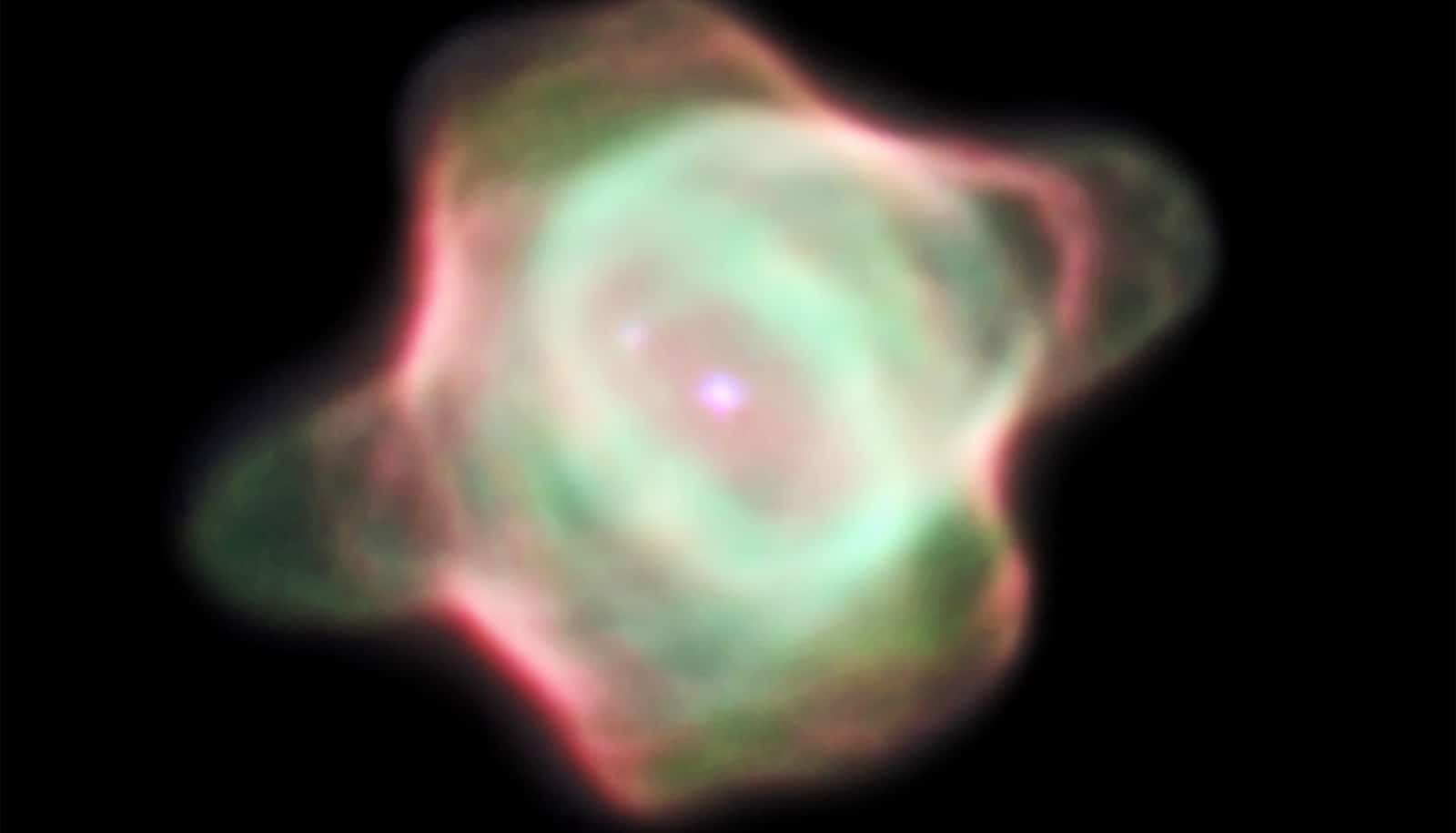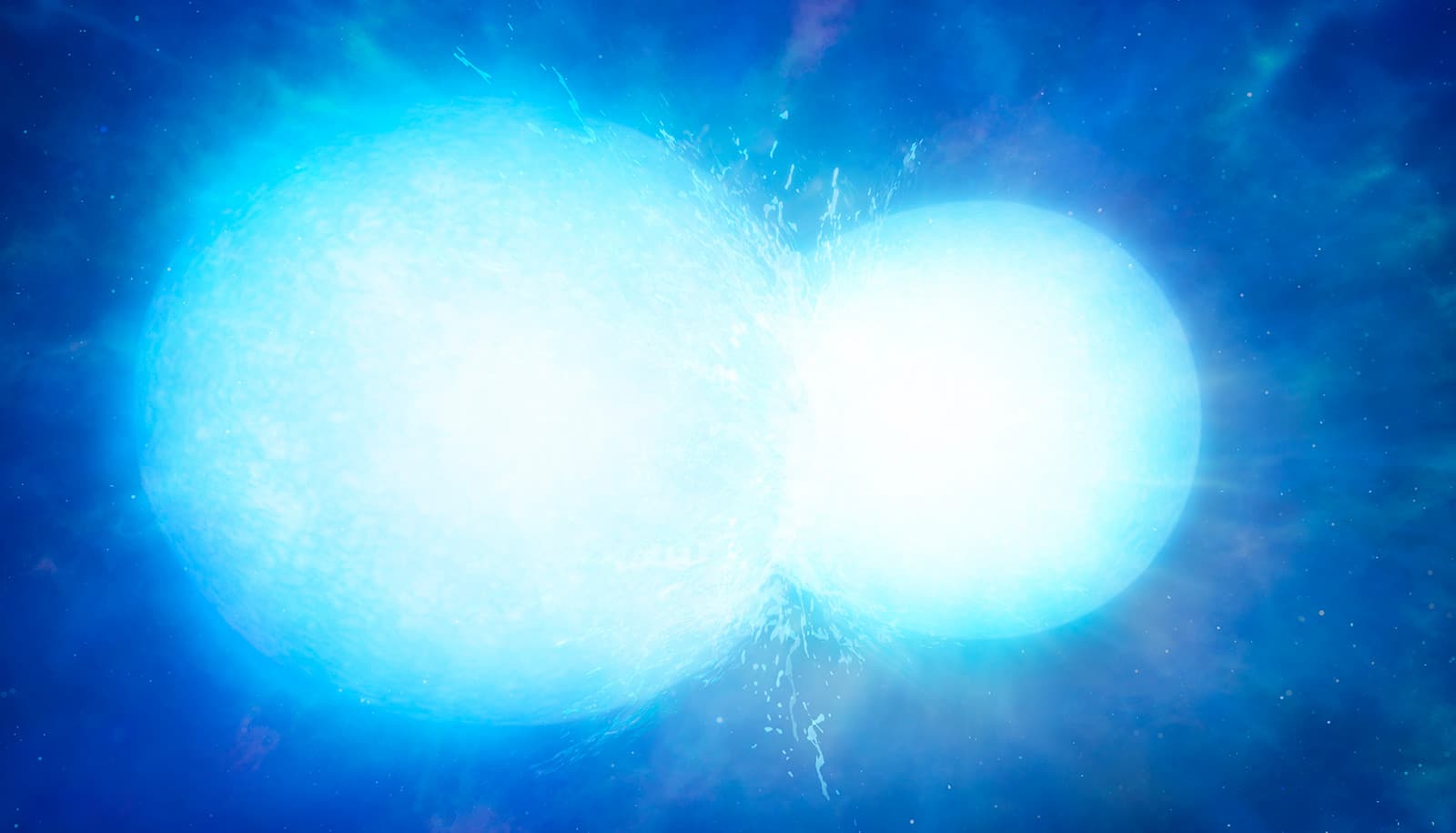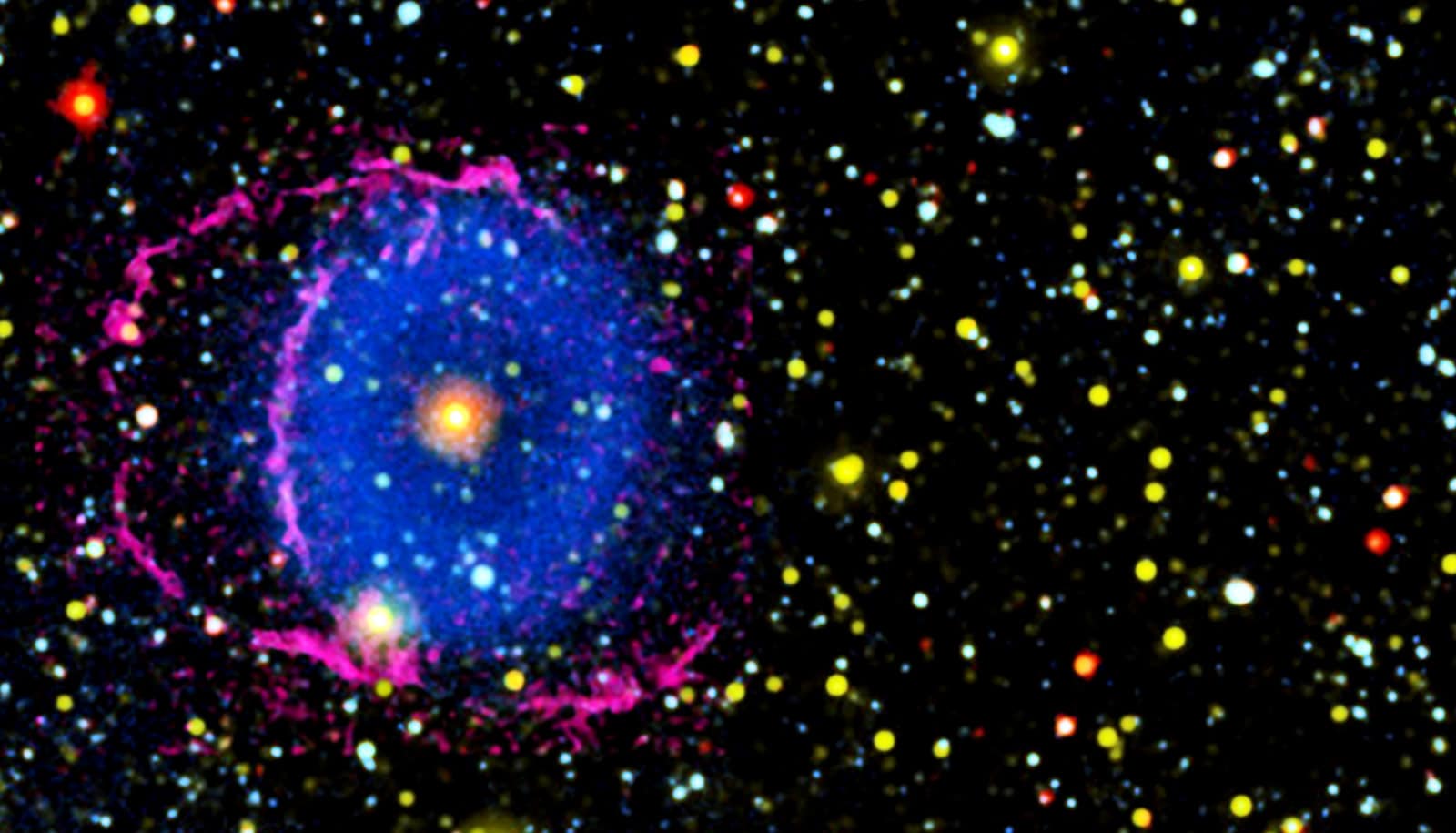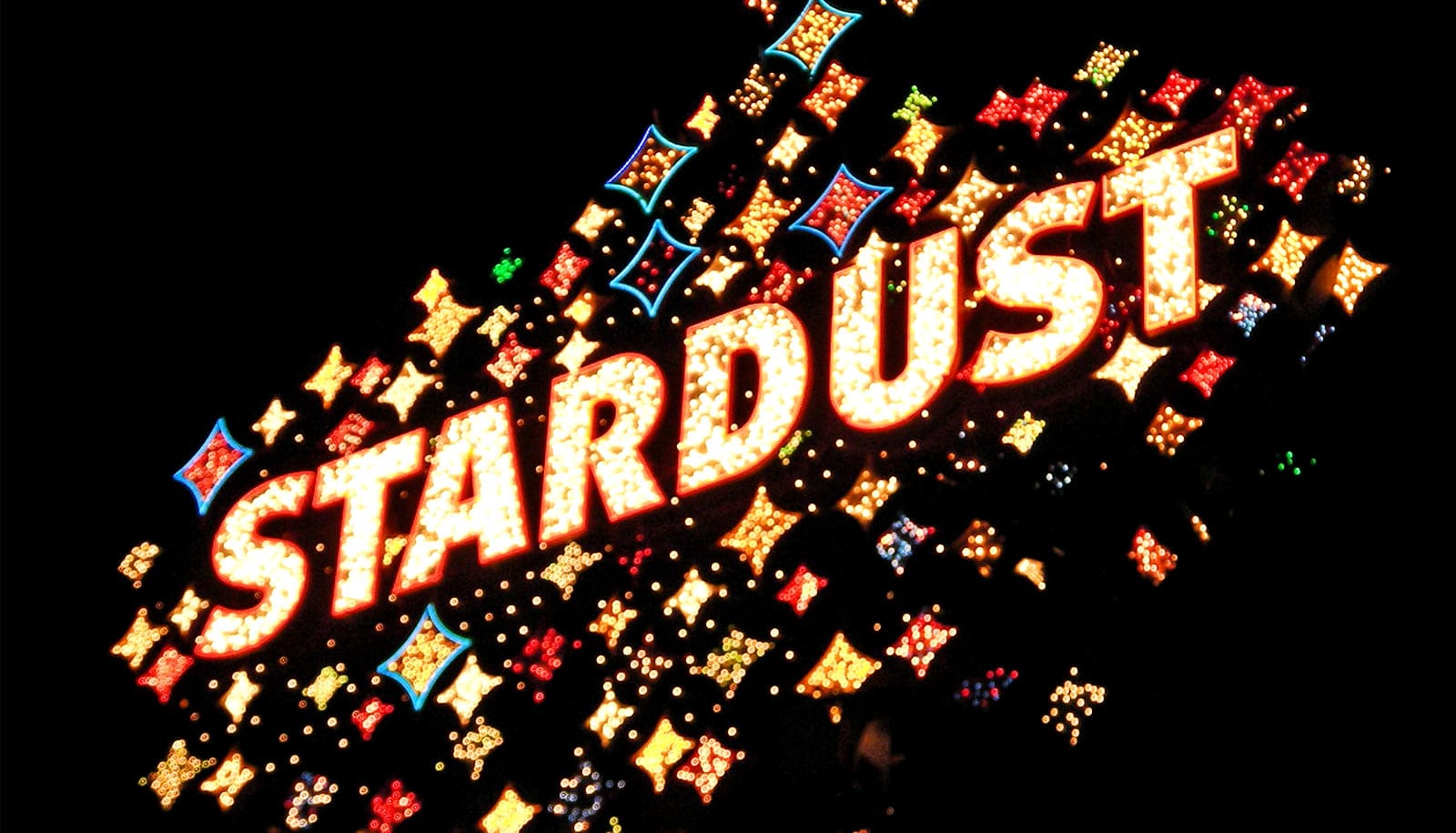The Stingray Nebula, by far the youngest planetary nebula in our sky, has faded significantly and changed shape over the course of just 20 years, researchers report.
Stars are rather patient. They can live for billions of years, and they typically make slow transitions—sometimes over many millions of years—between the different stages of their lives.
So when a previously typical star’s behavior rapidly changes in a few decades, astronomers take note and get to work.
Such is the case with a star known as SAO 244567, which lies at the center of Hen 3-1357, commonly known as the Stingray Nebula. The Stingray Nebula is a planetary nebula—an expanse of material sloughed off from a star as it enters a new phase of old age and then heated by that same star into colorful displays that can last for up to a million years.
The tiny Stingray Nebula unexpectedly appeared in the 1980s and scientists first imaged it in the 1990s using NASA’s Hubble Space Telescope. When astronomers analyzed a more recent image of the nebula which Hubble took in 2016, they found the unexpected change.
If dimming continues at current rates, in 20 or 30 years the Stingray Nebula will be barely perceptible, and was likely already fading when Hubble obtained the first clear images of it in 1996, says Bruce Balick, an emeritus professor of astronomy at the University of Washington and lead author of the paper, which will appear in the Astrophysical Journal.
“This is an unprecedented departure from typical behavior for a planetary nebula,” Balick says. “Over time, we would expect it to imperceptibly brighten and expand, which could easily go unnoticed in a century or more. But here we’re seeing the Stingray Nebula fade significantly in an incredibly compressed time frame of just 20 years. Moreover, its brightest inner structure has contracted—not expanded—as the nebula fades.”
Stingray Nebula does a speedy fade
Planetary nebulae form after most stars, including stars like our own sun, swell into red giants as they exhaust hydrogen fuel. At the end of the red giant phase, the star then expels large amounts of its outer material as it gradually—over the course of a million years—transforms into a small, compact white dwarf. The sloughed-off material expands outward for several thousand years while the star heats the material, which eventually becomes ionized and glows.
Balick and his coauthors, Martín Guerrero at the Institute of Astrophysics of Andalusia in Spain and Gerardo Ramos-Larios at the University of Guadalajara in Mexico, compared Hubble images of the Stingray Nebula taken in 1996 and 2016. Hen 3-1357 changed shape markedly over 20 years, losing the sharp, sloping edges that gave the Stingray Nebula its name. Its colors have faded overall and once-prominent blue expanses of gas near its center are largely gone.
“Even so, we were amazed when the Hubble images revealed how quickly the nebula was fading. It took a month of work to believe it.”
“In a planetary nebula, the star is really the center of all the activity,” Balick says. “The material around it is directly responsive to the energy from its parent star.”
The team analyzed light spectra from Hen 3-1357 emitted by chemical elements in the nebula. Emission levels of hydrogen, nitrogen, sulfur, and oxygen all dropped between 1996 and 2016, particularly oxygen, which dropped by a factor of 900.
The resulting fade in color and the nebula’s change in shape are likely connected to the cooling of its parent star—from a peak of about 107,500 degrees Fahrenheit in 2002 to just under 90,000 degrees Fahrenheit in 2015—which means it is giving off less ultraviolet ionizing radiation that heats the expelled gas and makes it glow.
“Like a doused forest fire, the smoke wanes more slowly than the flames that created it,” Balick says. “Even so, we were amazed when the Hubble images revealed how quickly the nebula was fading. It took a month of work to believe it.”
Running out of time
Astronomers have yet to understand why SAO 244567 made the Stingray Nebula light up and then fade almost as quickly. One theory, posited by a team led by Nicole Reindl at the University of Potsdam, is that the star underwent a brief burst of fresh helium fusion around its core, which stirred up its outer layers and caused its surface to both shrink and heat.
If so, then as its outer layers settle back down, the star may return to a more typical transition from red giant to white dwarf. Only future observations of the star and its nebula can confirm this.
“Unfortunately, the best tool to follow future changes in the Stingray Nebula, the Hubble Space Telescope, is near the end of its life as well,” Balick says. “We can hope, but the odds aren’t good for Hubble’s survival as its three remaining gyroscopes start to fail. It’s a good race to the finish.”
The Hubble Space Telescope is an international partnership between NASA and the European Space Agency, or ESA, and managed by NASA’s Goddard Space Flight Center in Maryland. The Space Telescope Science Institute is responsible for Hubble science operations. Funding for the research also came from the European Union and the National Council of Science and Technology in Mexico.
Source: University of Washington



